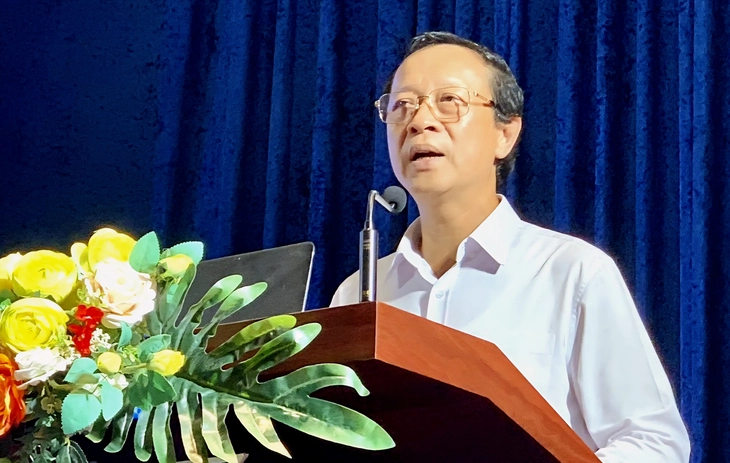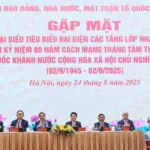The Ministry of Education and Training stated that it cannot currently proceed with reorganizing higher education institutions and vocational schools under its management because it is integrating two major projects into one comprehensive plan.
On the afternoon of October 15, Deputy Minister of Education and Training stated that an official document has been sent to the Ministry of Home Affairs, presenting specific views and proposals related to the reorganization of public educational institutions according to directives from the Central Steering Committee and relevant resolutions.
Proposal to merge and streamline the higher education system
Previously (October 8), the Ministry of Home Affairs held a meeting with the Ministry of Education and Training regarding the reorganization of public service units, state-owned enterprises, and internal units within political system organizations according to directives from the Central Steering Committee on reviewing Resolution 18.
According to the Ministry of Education and Training, in implementing Resolution 71 of the Politburo, this unit was assigned to develop a project for reorganizing the higher education system, while also developing a project to transfer some higher education institutions to local management, expected to be submitted to the Prime Minister in 2026.
Additionally, according to Government Resolution 03, the Ministry of Education and Training was also assigned to lead the development of a project to transfer multidisciplinary higher education institutions to this ministry’s management.
Based on the content of the September 25 meeting chaired by Deputy Prime Minister with relevant ministries and sectors, the Ministry of Education and Training is drafting implementation plans for these tasks to report to the Government and Prime Minister for consideration and decision.
Specifically, the Ministry of Education and Training plans to propose merging the content of the project to transfer multidisciplinary higher education institutions to this ministry’s management into the project for reorganizing the higher education system.
This merger aims to ensure comprehensiveness and consistency in the process of streamlining the higher education system nationwide, thereby forming a unified project to submit to the Prime Minister for consideration.
Therefore, the reorganization of higher education institutions and vocational schools under the Ministry of Education and Training cannot currently be implemented.
Difficulties in proposing vocational high school model
Regarding vocational education and continuing education, the Ministry of Education and Training stated it is encountering some obstacles in implementing directions from Document No. 59 of the Central Steering Committee on reviewing Resolution 18.
Specifically, the vocational high school model (combining vocational education centers and continuing education) is still being proposed in the draft amended Vocational Education Law, without legal basis for implementation. The Ministry proposes only reviewing and streamlining centers across related ward and commune areas first, and only reorganizing into vocational high schools after the law is passed by the National Assembly.
Regarding the direction for each province and city to have no more than 3 vocational schools, the current Education Law and Vocational Education Law do not define the concept of vocational schools, only colleges and intermediate schools. The Ministry suggests clarifying that this limit applies to public schools.
Simultaneously, it proposes considering the specific characteristics of localities with large labor forces and numerous vocational training institutions such as Ho Chi Minh City (62 schools), Hanoi (54), Hai Phong (19), Ninh Binh (28), Phu Tho (21)…
The Ministry also emphasized that reorganization should apply to both autonomous and non-autonomous schools to improve the quality and operational efficiency of educational institutions.
Guidelines issued for reorganizing general and preschool education
For the general education and preschool education system, the Ministry of Education and Training stated it has issued specific guidelines for reorganizing educational institutions appropriate to the two-level local government model.
The Ministry of Education and Training is collecting feedback on the draft National Assembly resolution on specific mechanisms and policies to achieve breakthroughs in education and training development, including regulations on reorganizing and restructuring the public education institution system.






